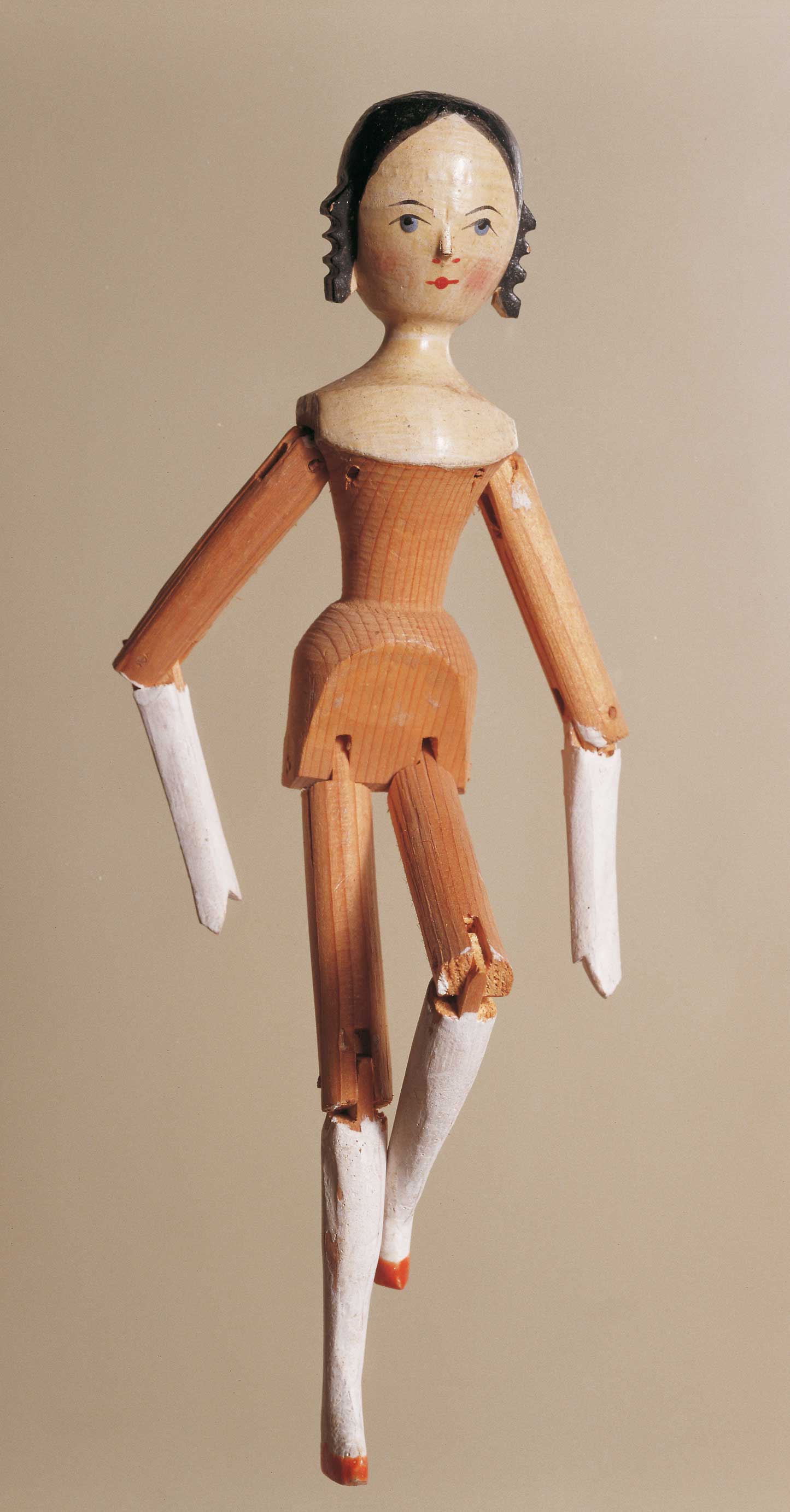Peg wooden dolls also known as Dutch dolls are a type of wooden doll from Germany and the Netherlands. They originated as simple lathe turned dolls from the Val Gardena in the Alps. These dolls were sold undressed. Young girls would then make their clothing from scraps of fabric.Other similarly constructed wooden dolls, using a jointing technique where the arms and/or legs are attached to the body with pegs, are some of the oldest surviving dolls, and were made worldwide. Sometimes a peg wooden doll’s arms or legs are locked together by the jointing system, so if one arm is moved the other will move. An advanced form of peg joints is where the body pegs are “split” and attached separately allowing independent movement.
Tuck comb dolls are a special style of peg wooden doll, named for their carved hair comb. The head and body is turned as one piece. The hair is usually painted with curled bangs and with a painted comb. Early tuck comb dolls had elongated, graceful proportions, nicely carved details, painted slippers, and sometimes with wood pendant earrings. Some dressed as merchants were called pedlar dolls.
© wikipedia.org
History of Peg Wooden Doll
 Peg wooden doll from Val Gardena, 1850
Peg wooden doll from Val Gardena, 1850 